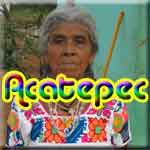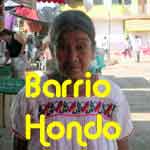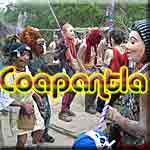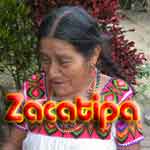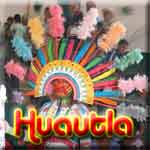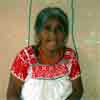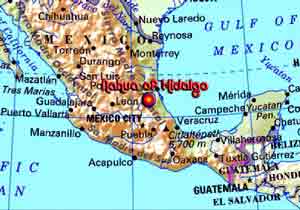 |
 |
 |
 |
|
Secure Paypal
Help defer cost of documenation |
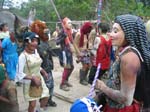 |
||
|
La Enciclopedia de los Municipios de México
|
||
| Info del Municipio de Huautla, Hidalgo | ||
Nahua of Huautla District of Hidalgo
The lush, tropical region of Northern Mexico known as La Huasteca is home to seven different indigenous ethnic groups. Náhuatl speaking people comprise the largest group, with most Nahuas living in the states of Veracruz, San Luis Potosí, and Hidalgo. Some linguists estimate that over 800,000 speakers of the Eastern and Western Dialects of Náhuatl occupy La Huasteca (which includes parts of six states).
Over 150,000 Nahuas live in the nine "municipios" that make up the Huasteca of Hidalgo - Atlapexco, Calnali, Huautla, Huazalingo, Huejutla, Jaltocán, Orizatlán, Xochiatipan, and Yahualica. Indigenous people represent over 65% of the population in each municipality, except for Calnali (36.7%). Most are Nahuas, although there are Otomí living in Huautla, Huejutla, and Huazalingo and Teenek people in Huejutla. According to 1995 statistics, the municipios of Xochiatipan (97%) and Jaltocán (93%) are almost entirely Nahua. The Nahuas of Hidalgo share many traits of religion, culture, and costume with Nahua people in the neighboring states of Veracruz and San Luis Potosí.
The Hidalgo Huasteca is a warm, humid region where rain falls all year, and wild plants, birds, animals, and fish are abundant. (According to local legend La Huasteca got its name from an ancient chief, Cuextécalt, who led his people from the Florida Peninsula to Mexico by canoe. This migration ended when they came upon the fertile plains of the Río Pánuco and settled down). Though the Hidalgo Huasteca may seem a tropical paradise, it is one of more marginalized areas of Mexico with regard to illiteracy, low incomes, lack of access to health care (except for traditional curing), and absence of vital services such as electricity and clean water. A high percentage of local people are monolingual in Náhuatl.
Most people are subsistence farmers, growing maize, beans, squash, and chiles in small gardens near their homes. Although most Hidalgo Nahuas consider themselves Catholics, many rituals with pre-Hispanic roots are still practiced in conjunction with planting and the agricultural cycle. Coffee, sugar cane, oranges, and limes are cultivated for domestic use and for sale in local and regional markets. La Huasteca is cattle country, but large numbers of pigs and turkeys are also raised, as are bees for their honey and wax. Many boys and men leave home to work (often seasonally) on the large ranches and plantations of La Huasteca or go to work in Pachuca (the state capital) or Mexico City.
Because of the region's isolation, local artisans produce a wide range of crafts and textiles to supply peoples' needs. Jaltocán is known for leatherwork (huaraches), wax candles, palm weaving (hats and chairs); textiles of ixtle, wool, and cotton, as well as for embroidered blouses. Atlapexco produces ceramics, musical instruments, and fine embroidered and beaded clothing. Wool textiles, furniture, and jewelry are produced in Calnali. Huazalingo is famous for its ceramics, weavings, and leatherwork.
Many men still wear the traditional costume of long-sleeved shirt and pants (tight at the ankles) made of white manta fabric. Huaraches, woven palm fiber hat, shoulder bag, and machete complete the outfit. Women generally wear a colorful, floral print skirt (enagua) and a short-sleeved white blouse that is decorated on the yoke and sleeves with fine embroidery, crochet, or even seed beads. The individual galleries show the great diversity of designs, colors, and techniques used by women in different communities to decorate their blouses. Quechquémitls are also worn as part of the traditional costume, and many women wear aprons and carry shoulder bags.
Although the mountainous Municipio of Tianguistengo is not part of La Huasteca, around 33% of local inhabitants speak Náhuatl and many still wear traditional dress similar to that worn in the Huasteca. A major craft practiced in Tianguistengo is the cutting of colored paper into festive decorations. Perhaps this arose from the cutting of paper figures, which plays a major part in religious rituals in parts of the Sierra Madre Oriental.
|
Home - The Collection - Indigenous women- Bob's Top 10 - Textile Patterns - Documented Villages - Participate The Store Other traditions Video Page Email me at: mexican@mexicantextiles.com
© 2006 Bob Freund All Rights Reserved |
